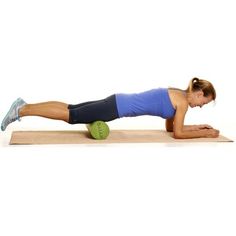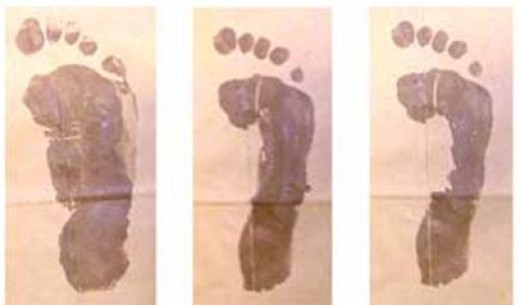Flat Feet/Falling Arches 
Flat feet or falling arches is a condition where there is little to no arch on the inside of your foot, causing the sole (bottom of feet) to come into contact with the floor. Tendons on the bottom of your feet attach the heel and foot bones and these tendons form the arch. If for some reason, these tendons do not pull, the result is little to no arch.
Test to determine if you have flat feet:
- Wet the bottom of your feet.
- Stand on a surface that will show your footprint, like concrete.
- Look at the foot print.
- Complete imprints mean your feet are flat.
Causes
Arches develop during childhood and it is common for an infant’s fee to be flat. In some cases this development does not occur and leads to flat feet. Other causes include:
- Wear and tear on tendons as you age
- Obesity
- Foot injury
- Ankle injury
- Arthritis
- Diabetes
- Torn Tendons
- Nerve issues
Symptoms
The condition is usually pain less but can lead to problems such as:
- Feet get tired easily
- General foot pain, especially in arches or heels
- Swollen feet
- Back pain
- Leg pain
- Hip pain
- Plantar fasciitis
Special Note: Having little to no arch can lead to a knee valgus (knees caving inwards) during exercises like squats. Special care should be placed on avoiding this to prevent knee issues, in particular MCL injuries.
Treatments for Flat Feet
Common treatments include:
- Shoe implants – Orthodics or OTC arch supports. While this will not cure the issue, it can provide relief from symptoms.
- Soft tissue work such as stretching or foam rolling, particularly for calves, quads, and achilles tendon.
- A shoe with good support.
- Avoiding use of sandals.
- Physical Therapy/Exercise to improve stride and strengthen weak muscles of the leg.
- Rest and avoid activities that cause pain such as jumping and running.
- NSAIDs
- Weight Loss
- Surgery – rare but may be necessary if caused by a tendon tear.
- Injection of corticosteroids
[divider height=”1″ width=”250px” bg_color=”#34ceda” margin_top=”20″ margin_bottom=”20″ alignment=”center” display_icon=”off” /]
In need of Rehabilitation for a Flat Foot Injury? Schedule an Appointment Today!
If you have any questions, or want a consultation with a professional, feel free to call, or schedule an appointment online at any of our Bergen County or Passaic County offices in New Jersey. Choose from Glen Rock, Franklin Lakes, Fair Lawn, Ho-ho-kus/Ridgewood, and/or Clifton – we make it possible for you to visit any of our offices at your convenience.
[divider height=”1″ width=”250px” bg_color=”#34ceda” margin_top=”20″ margin_bottom=”20″ alignment=”center” display_icon=”off” /]
Foam Rolling
If you are experiencing pain from flat feet, it is a good idea to stretch and use a foam roller.
General Foam Rolling Guidelines
Foam rolling is not meant to be comfortable. They come in different firmness levels and when starting off it may be a good idea to use a less firm roller. There are many areas you can roll but here are the general steps:
- Place the roller around the intended area.
- Using your hands and feet as leverage, do broad strokes and move the roller along the muscle.
- Pinpoint certain trigger points – they will be the tenderest spots on the muscle.
- Find one you can tolerate and keep pressure on that spot for 30-40 seconds. Remember to breathe!
- You will feel the pain/discomfort dissipate.
- Once gone, mostly gone, or the 30-40 seconds is up, move on to the next trigger point.
- Repeat for allotted time.
It is important to note a few things. Rolling for 30-40 seconds is crucial. This will send signals to the brain that it should relax the muscle. Second, make sure to breathe from your stomach; this will help ease tension in the body. Keep in mind that if the roller is too firm, you will not be able to breathe properly and will start to create more tension in the body.
Calves
- Place the roller on the meaty part of your calf.
- Place your hands behind you for support.
- Lift your butt and place pressure on the calves.
- You can roll both at the same time, but if you feel nothing, place one leg on top of the other.
Pro Tip: It is also possible to roll your calf with a lacrosse or tennis ball, it can be done the same way just remember to elevate your leg on a yoga block or stack of books. Keep the ball on the meaty part of your calf and then flex your foot up and down.
Quads
- Kneel in front of foam roller.
- Lean forward, pinning the roller between your thighs and the floor (you will be in a low plank position but with the roller on your thighs).
- Roll up and down your leg.
- Do not roll over your knee.
- It is possible to foam roll one leg at a time by placing on leg on top of the other.
Pro Tip: Try tilting your body on one leg to get the outside muscle of the quad (vastus lateralis) which is usually tight.
[footer title=”Do you, or someone you know need rehabilitation from a flat foot injury? We can help you with a simple consultation.”]


